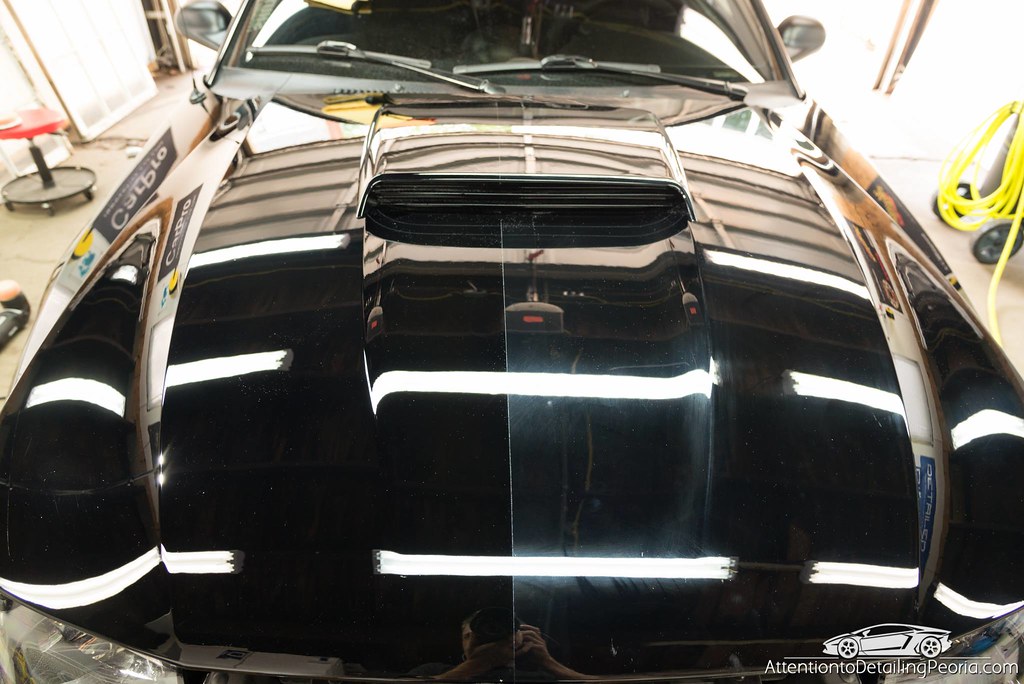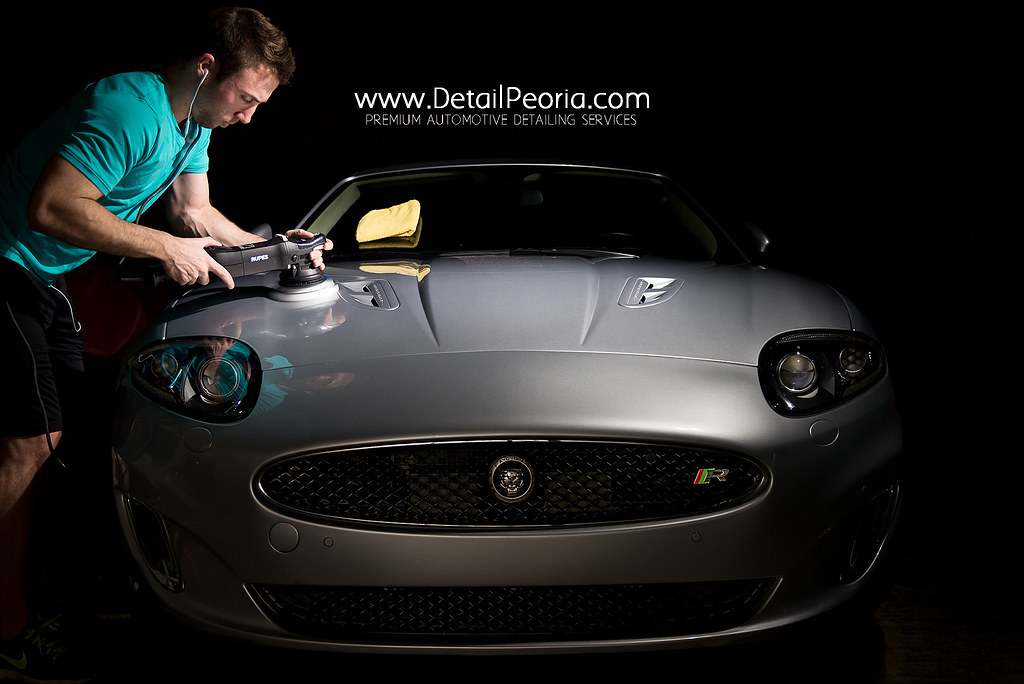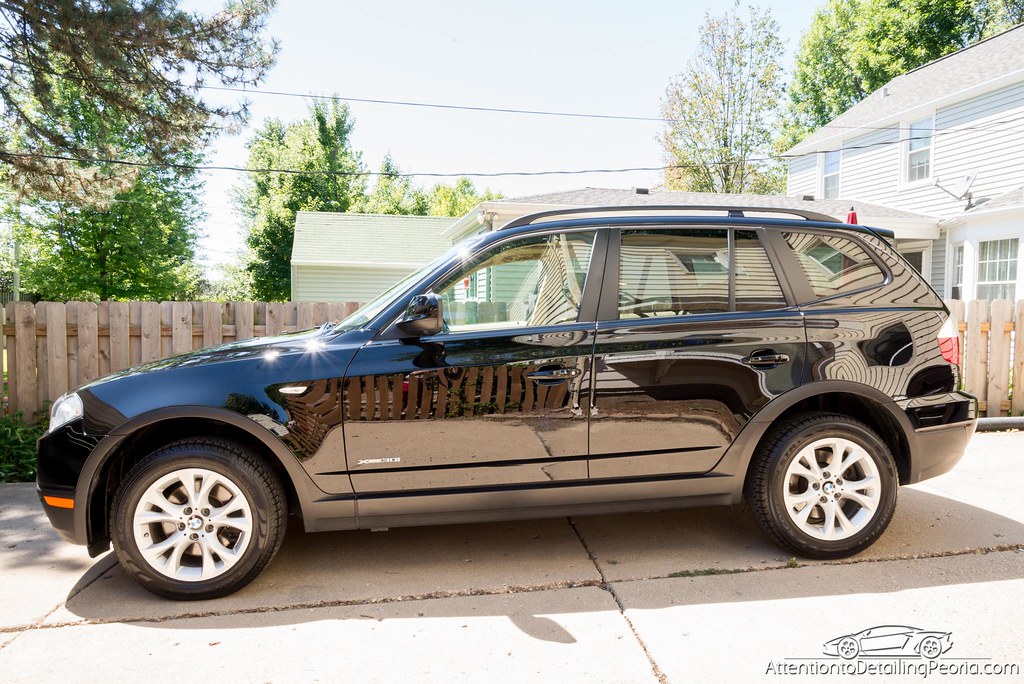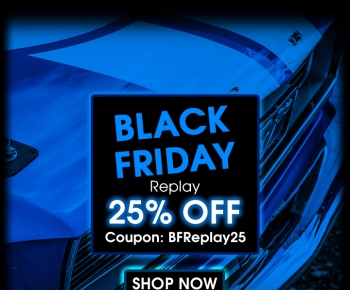Get Better Paint Correction Results by Improving Your Lighting
by Zach McGovernPaint correction is the art of removing defects from paint in order to produce a more perfectly reflective surface. This procedure requires specialized tools, pads, and products as well as a knowledgeable detailer.
When you ask yourself “what tools do I need for paint correction?”, the most likely thing that comes to mind would be a random orbital polisher, pads, compounds… but how much thought do you put into your inspection lighting?

Inspection lighting is a critical part of the correction process. If you cannot see the defects, you can’t be sure you are removing them. It is as simple as that.
Throughout the years, I have used, and still do use, a variety of light sources during the correction process of our services. The main types of light we use are harsh natural light (direct sunlight), LED lighting, Xenon lighting, fluorescent lighting, and halogen lighting. Each type of light is different, and therefore effects what you are able to see on the paint.

My personal experience is that LED lighting in the daylight color temperature (~5000K) tends to be the most revealing, and therefore is the light source that we use most often when correcting paint. The LED lights have revealed flaws that are otherwise invisible, or at least very difficult to see, with other light sources. In fact, many people will claim that a bright LED light source is more revealing than direct sunlight, which is the ultimate test as that is the light that the vehicle will be seen in most often.

Another variable when selecting a light source is the light output angle. Different bulbs and fixtures will emit light at various angles depending on their design. I have found that I prefer a narrower beam (spot light) for my more powerful work lights as they work very well at highlighting swirls, scratches, and most other blemishes in the paint. I also use hand held LED lights with a zoomable light pattern that can be changed from very narrow to very wide. I have found that in some instances, a very wide light pattern can be beneficial in identifying light marring, product smearing, and other very hard to see details in the paint that strong directional lighting may wash out.
Choosing the proper lighting can take your detailing to an entirely different level. To reiterate, if you cannot see the defects properly, you will never know if you’re removing them. If you’re still using the same old halogen work lights from 5 years ago, consider upgrading to a more specialized lighting system. I’m sure you and your customers will appreciate the enhancement in your results.








What do you recommend for my gray type car? I bought a 2000 lumen light but I can’t see the swirls but I know they are there. I can see them at sundown when the sun is not too bright. I want to know what light you recommend me to buy in order to see the swirls. I just bought a rupes 21 mark ii, a bigfoot mini, compounds, essence and cquartz and I am just waiting for a light to see my defects in my garage while correcting.
Hi – while light output (lumens) does play a part in seeing defects, it is a small piece of the puzzle. Output angle (wide vs narrow), color temp, and type of light also play a part in your ability to see the defects. Can you provide any more information on the current lighting you are using? Also, are you working in a well lit environment with bright ambient light, or more of a dim environment? A lot of it comes down to experimenting and finding what works best in your given situation. This is why we have numerous light sources on hand.
Currently I use snap-on LED work light. I also have an LED on the ceiling. It is an open garage so that makes my environment not so bright at night but dim. In the mornings the sun will iluminate it. I haven’t tried the snap on work light in the mornings to see if I can see the defects now that I think about it. I was looking for a more convenient light like rupes pen or scangrip pen to inspect while I work the car.
Zach,
Great informative article on lighting. I still need to build my homemade LED inspection light using your plans. I not only appreciate your detailing work, but also your photographs.
I especially like the photo of the Jag. There is a dude holding a Rupes ruining the shot! Kidding! Keep writing, I check the site multiple times a day for new blog posts.
Bob
Thanks, Bob! I tried to get that guy out of the picture, but he was just working so hard he wouldn’t move 😉
Great article thanks Zach!
Thanks buddy!
These tips will definitely provide you with better paint protection. Choosing a reputed car grooming provider is definitely the most important thing.
I am looking at for your recommendation for my airstream R V camper
Hi James – what exactly are you looking for? The article here discusses lighting… do you need an inspection light for your RV?
Excellent Car Detailing It’s time to acquire your ride in shape to hit the street in the heat, and the best method to begin is by giving it a superior wash.